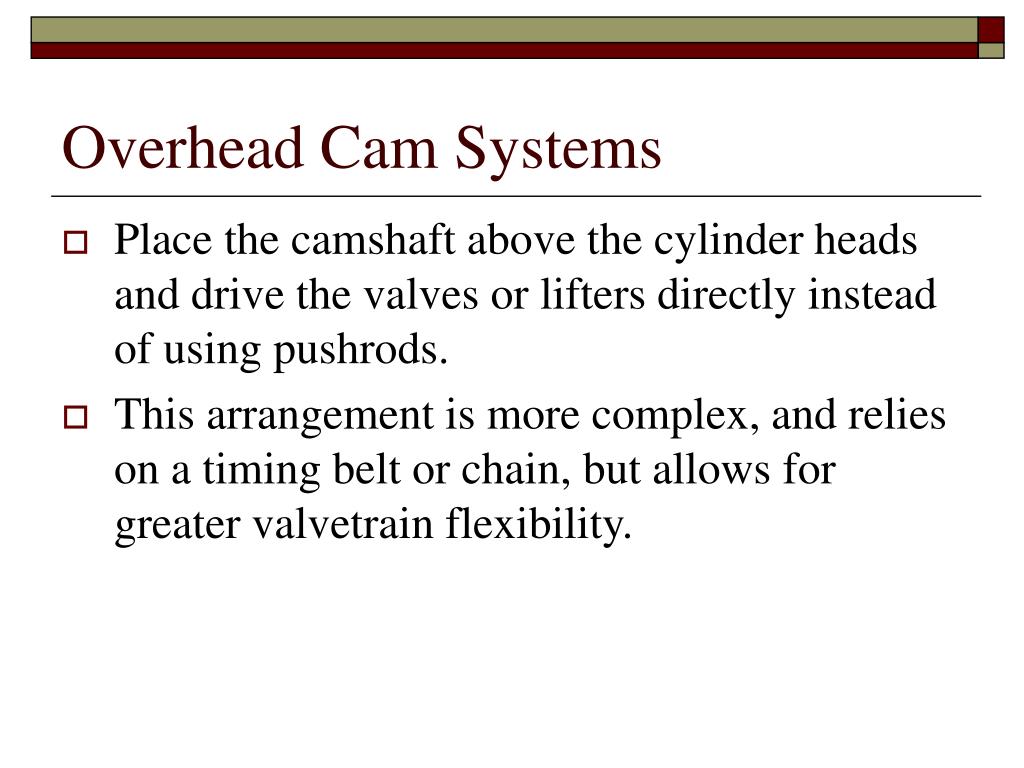

The OHC configuration does away with most of this for the reduction of mass in the valve train. OHV configurations use a centrally located cam shaft (central to the engine block), and actuates the valves through the use of lifters, pushrods, and rocker arms. The whole purpose of having OHC configurations is to do away with another form of valve actuation, that of pushrods found in the Over Head Valve (OHV), which is found in most American V8 configurations (Ford uses an OHC version for their motors). In most cases, the cam directly actuates the valve without the use of a rocker arm (it may or may not have a "lifter" between the cam and the valve). DOHC engines usually have a configuration of 2-intake and 2-exhaust valves per cylinder, but in some cases like the configuration Volkswagen-Audi Group (VAG) uses a five valve per cylinder (3-intake and 2 exhaust). For DOHC heads, the cams can be tied together with a short chain, then have a separate chain/belt which drives the cams, or can have just a single chain/belt which runs the whole thing. In this example, you can see there are two separate cam shafts riding atop the head. The 2-valve per cylinder is a much mor prevalent configuration.

This is an example of a 3-valve per cylinder head (2-intake and 1-exhaust per cylinder).

The cam, then actuates the rocker arms which you can see are pointing to either side of the head. This wheel is attached to the cam itself. The wheel at the right of the picture is what the cam belt rides on. The cam has a "bump" or "hump" in it which actuates the valves which allows air into and exhaust out of the cylinder of the engine at the correct time so the engine will run correctly.Īs for the configurations themselves, in SOHC configurations, the camshaft is placed on top of the head. For those who don't know, SOHC and DOHC refer to the following:Ī cam refers to a "cam shaft" or the thing which goes bump in the night.


 0 kommentar(er)
0 kommentar(er)
